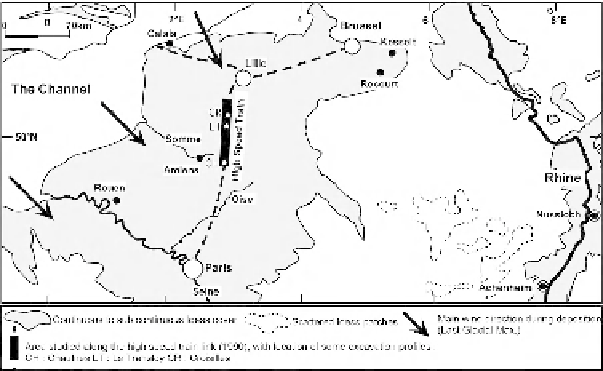Environmental Engineering Reference
In-Depth Information
Figure 6.4.
Extension of the last glacial loess in Northern France [ANT 03] (modified)
The northern area of France is located in a key position between Paris and
northern European countries, including Belgium and the UK. With increasing
European economic exchanges, various infrastructures have been constructed in this
area, including highways, high-speed railways (TGV), gas-pipe lines, etc. The TGV
high-speed railway (see Figure 6.4) has an important role in the transportation of
individuals to UK, Belgium, Germany, the Netherlands and other countries.
Collapsible unsaturated loess deposits have a low plasticity index and a high
porosity. The sensitivity to changes in water content appear to be particularly critical
in the case of high-speed railways, where tolerances in terms of allowable
displacements are more severe than in standard railways or in other transportation
infrastructures.
Numerous sinkholes appeared during the railway's construction and the
beginning of the TGV service in 1993 in zones where the layer of vegetal soil had
been removed and the layer of collapsible loess was directly exposed to climatic
changes and water precipitation [CUI 95, CUI 97]. Among the 43 sinkholes
observed during that period along the 50 km section where the railway went through
the collapsible loess deposits, it appeared after careful examination that 19 were of a
natural origin. The remaining 21 were considered to be artificial, with holes and
trenches excavated by soldiers in that area where fighting was particularly intense
during World War I (the battle of the Somme, among others). More recently, many
other sinkholes have been detected following the two rainy periods that occurred
during winter 2001 and spring 2002.

